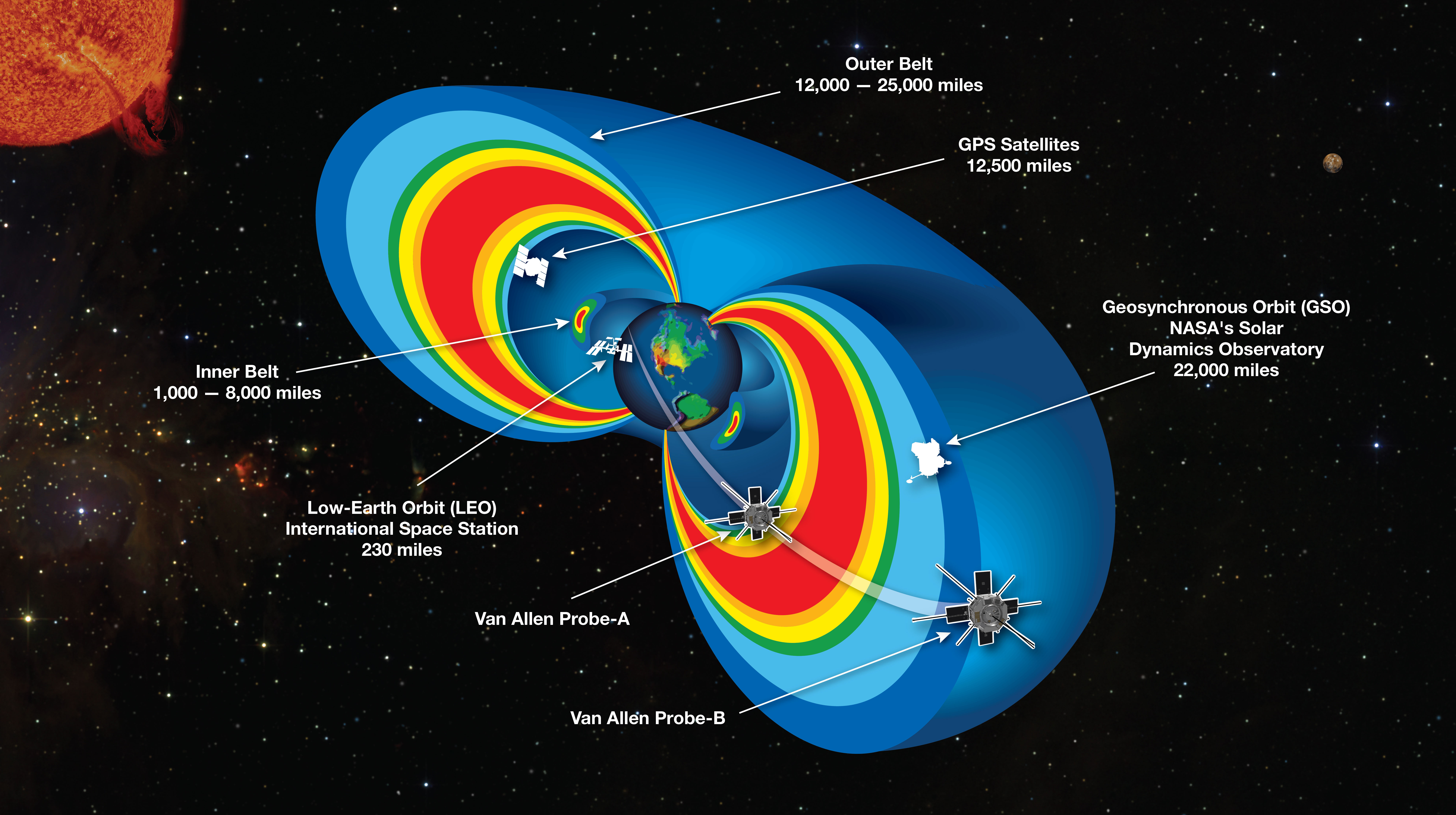The Space Radiation Environment
Spacecraft beyond Earth's atmosphere face a complex radiation environment that impacts electronics, human safety, and mission lifetime. Proper modeling, shielding, and operational planning are critical for mission success.
Sources of Space Radiation
Galactic Cosmic Rays (GCRs)
GCRs are high-energy, heavy nuclei (mostly protons, helium, and heavier ions) originating from outside our solar system. They are omnidirectional and present a constant background threat, especially problematic for long-duration missions and deep-space exploration.
Solar Particle Events (SPEs)
SPEs result from solar flares and coronal mass ejections (CMEs), emitting high fluxes of protons and ions. Their intensity can spike within hours, making them one of the most dangerous transient events for satellites and astronauts.
Trapped Radiation (Van Allen Belts)
The Van Allen Belts consist of charged particles trapped by Earth’s magnetic field:
- Inner Belt: Predominantly high-energy protons from cosmic ray interactions with the upper atmosphere.
- Outer Belt: Dominated by high-energy electrons from solar wind.
 Credit: NASA
Credit: NASA
Geographical Variations in Radiation
Polar Regions
The Earth's magnetic field lines open near the poles, allowing high-energy particles to precipitate. Satellites in polar orbits (like sun-synchronous ones) encounter elevated radiation levels on every pass.
South Atlantic Anomaly (SAA)
The SAA is a region over the South Atlantic where the inner radiation belt dips closer to Earth's surface due to a geomagnetic offset. Satellites like the ISS and Hubble telescope pass through this region regularly and suffer increased particle hits.
 Image credit: NASA
Image credit: NASA
Influence of the Solar Cycle
The 11-year solar cycle profoundly affects space radiation:
- Solar Maximum: Increased solar activity and SPE frequency; enhanced outer belt electron fluxes. GCR flux is suppressed due to stronger solar magnetic shielding.
- Solar Minimum: SPEs become rare; however, GCRs peak, raising baseline radiation exposure.
This variation directly impacts the Total Ionizing Dose (TID) accumulated by electronics, especially for long-lived missions.
References
This Page is Actively Maintained
For contributions or suggestions, please email info.spacerepo@gmail.com with the subject "Suggestion for: Page"